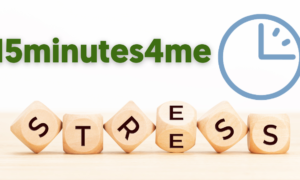Google’s core updates can lead to major changes in website rankings, so businesses must work extra to win back their online visibility and organic traffic. These updates have one main goal: to show users the most relevant and useful results. When your site is hit by a core update, take the time to learn why those updates happen and put a good recovery plan in place.
In this blog post, you’ll learn practical steps to recover your website’s rankings and safeguard against future Google changes, with expert strategies used by top SEO service providers.
1. Understand What a Google Core Update Is
Google’s core updates are changes to the algorithm that help the search engine judge and place content in search results. Unlike penalties for spam or mobile issues, core updates assess the overall quality and relevance of content across a website. That’s why even websites using ethical practices can see a drop in rankings.
Understanding this is key to building a search engine optimization (SEO) recovery strategy.
2. Diagnose the Impact
The first thing to do is to see how your site has been influenced by the update.
- Check Analytics: Check your website’s analytics to spot important decreases in visitor numbers or engagement metrics including bounce rate and session length. You can find these trends using Google Analytics and Search Console.
- Review Keyword Rankings: To see how your keywords have moved, rely on tools such as Ahrefs, SEMrush, or Moz.
- Compare with Competitors: Find out if sites from your industry have also been affected. Comparing with competitors lets you notice larger patterns throughout your industry.
3. Focus on E-E-A-T (Experience, Expertise, Authority, Trust)
Google measures content quality through E-E-A-T. It’s the foundation of any strong content marketing strategy.
- Experience: Add personal insights or case studies from your industry.
- Expertise: Ensure articles are written by qualified experts in your niche.
- Authority: Build high-quality backlinks from trusted domains.
- Trust: Have a complete “About Us” page, secure HTTPS, and clear contact options.
This aligns with content optimization services that improve your credibility in the eyes of Google.
4. Perform a Content Audit
One of the most powerful tools in SEO strategy is a comprehensive content audit.
- Improving Relevance: Replace information that has expired and make your content match what users are now looking for.
- Enhancing Quality: Check your pages for fluff and add important insights readers can act on.
- Eliminating Thin Content: Take pages with only a little content and improve them by expanding or combining with other pages.
- Adding Multimedia: Make your information more attractive by using illustrations and videos.
This process is often offered by content writing agencies that specialize in Google-friendly content creation.
5. Optimize for User Experience (UX)
User Experience directly affects your search rankings and conversion rates.
- Mobile Usability: Use Google’s Mobile-Friendly Test to identify issues.
- Page Speed: Improve load times using PageSpeed Insights.
- Site Navigation: Make your website design clean and intuitive.
- Interactivity: Avoid annoying pop-ups that disrupt user sessions.
For best results, consider working with a Web development company focused on UX design and SEO integration.
6. Strengthen Technical SEO
It ensures both crawling and indexing of your website can take place by search engine bots.
- Fix Broken Links: You can use Screaming Frog to spot and repair problems with any internal or external links.
- Improve Indexability: Be sure to put in your most recent sitemaps into Google Search Console.
- Optimize Core Web Vitals: Keep track of LCP, FID, and CLS measurements.
- Ensure HTTPS: Secure your site by enabling SSL.
This is where technical SEO services from companies like Web Spider Solutions can help recover lost traffic and rankings.
7. Build High-Quality Backlinks
Your website’s authority depends heavily on link-building strategies.
- Relevance First: Ensure backlinks come from your industry niche.
- Disavow Spam Links: Use Google’s Disavow Tool to clean up your link profile.
- Engage in Outreach: Partner with bloggers or publish guest posts on authoritative websites.
Effective off-page SEO strategies can restore your site’s trust score in Google’s algorithm.
8. Engage Your Audience
Google prioritizes content that resonates with real users.
- Encourage Comments: End blog posts with questions or calls-to-action.
- Promote Social Sharing: Add visible social share buttons throughout your blog.
- Foster Community: Use newsletters and interactive content to bring users back.
A good social media marketing strategy complements these efforts, extending your reach and engagement.
9. Monitor Progress Regularly
Core update recovery is a long-term SEO process.
- Track Rankings: Use SEO tools to track keywords and referring domains.
- Set Benchmarks: Compare pre- and post-update traffic and conversions.
- Adapt Strategies: Align your website with Google’s latest guidelines.
This is a service offered by most digital marketing agencies, including performance tracking and monthly reporting.
10. Be Patient and Persistent
SEO is not a quick fix. Core update recoveries take time and require a steady hand. Focus on long-term digital growth and sustainable white-hat SEO techniques.
Conclusion
Getting back to where you were after a Google update means putting your energy into quality content, good user experience, and technical work. Although it may take a while, following all the guidelines helps you get back to where you were and keeps your site ready for next updates.
By focusing on E-E-A-T, regular audits, digital marketing consistency, and user needs, your site will grow stronger and become more resilient with each update.
Need expert help? Contact Web Spider Solutions — a trusted provider of SEO services, website development, and online marketing solutions — to guide your brand back to the top of search results.









































